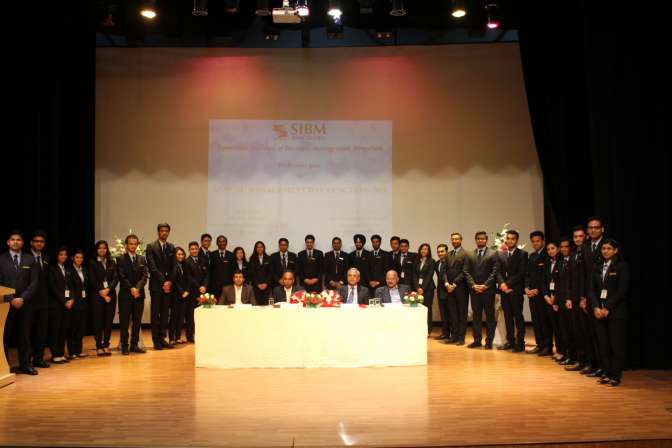“A revolution doesn’t happen when society adopts new tools, it happens when society adopts new behaviours” – Clay Shirky, US Now
A bitter truth but indeed a truth! In today’s competitive market if the companies fail to develop their best talent and adopt fresh behaviours, they risk losing them to the competitors who can. What should then be the ultimate objective of the company? What would be the driving force that would help the organisation build a strong skilled team of people who manage the other employees in the firm? The role of HR is something we all are familiar with. Is the grand vision of HRD surviving or is it crowding out of the focus? This question is of prime importance as the basic mindset of most of the individuals is that HR means ADMIN!! HR is one field where numerous myths endure. But if this is the myth what is the fact?
Gone are the days when HR work involved inputs, advice, direction and execution leading to organisational effectiveness. This is definitely one important aspect of HR functionalities but there is much more that has evolved in recent times that will become the major push for HRD to bloom in the coming century. This is true call to Big Data and HR analytics. It appears to be attracting an immense amount of attention these days. It is assumed at present that HR fails to provide deep insight into what’s going to happen tomorrow and next year because they are concerned with existing workforce and immediate business priorities. Let’s delve deep into what Big Data and HR Analytics is all about.
Big data is a large volume of unstructured data which cannot be handled by standard database management systems like DBMS, RDBMS or ORDBMS. It deals with the analysis of massive amounts of transactional and business data to segment customers and predict consumer behaviour. Just like Marketing and Sales wants to know who the highest profit customers are, HR needs to understand their internal “people behaviour” and what factors drive high productivity, service, innovation, and execution. Once they have the accurate data, they can target compensation, training, leadership development programs and internal movements with precision. Focusing on the right people, investments would become much simpler.
FACTS OF HR ANALYTICS

Google’s market success can be attributed to the extraordinary people management practices that result from its use of big data and analytics. It is the world’s only data-driven HR function. It believes in reinventing traditional HR and the processes that drive innovation. At Google it’s not called human resources; instead, the function is called “people operations.”People management decisions at Google are guided by the powerful “people analytics team.”The team reports directly to the VP and it has a representative in each major HR function. It produces many products, including employee surveys and dashboards. It also attempts to identify insightful correlations and to provide recommended actions. The goal is to substitute data and metrics for the use of opinions. Almost everyone has by now heard about Google’s free food, 20% time, and wide range of fun activities but no one will realize that each of these was implemented and are maintained based on data. Their main goal is to bring the same level of rigor to people-decisions that they do to engineering decision. This strategy is what the other organisations have to learn from Google. (Ref- Article- How Google Is Using People Analytics to Completely Reinvent HR by Dr. John Sullivan)
TWO KEY APPROACHES TO HR ANALYTICS:
- Process Analytics: It connects individual processes. It drives an action for the results across the organisation.

Image1: Examples of Process Analytics (Ref- HR people and strategy magazine)
- Integrated Analytics: It combines the key business drivers from the Process Analytics approach into an integrated business-focussed strategic plan.

Image2: Examples of Integrated Analytics (Ref- HR people and strategy magazine
HOW TO CONDUCT HR ANALYTICS? A six step strategy has been evolved to show the pathway of conducting HR Analytics. It has always been recommended that whatever be the way of conducting the HR Analytics the most important aspect is to pick two or three priorities and build action plans around those priorities. As per Experts making frequent changes to the strategic focus of intervention is not advisable.

Image3: Business partner (Ref- HR people and strategy magazine)
IS ANALYTICS TIME CONSUMING?
What often consumes more time is the challenge to identify and collect new data required for analysis. Also, it is important to understand which analytics to apply, how much time and resource is needed to give us the deeper insights. Once the data has been collected, the time needed to carry out even the most advanced statistical procedures tends to be significantly shorter. There are three frameworks that can be applied to make the most precise and on the spot decisions, even in situations where there is little time for extensive data collection.

Image 4: Three frameworks for effective HR analytics (Ref- HR people and strategy magazine)
TALENT PLANNING VIA HR ANALYTICS
Talent planning is a critical step in building an effective leadership plan for the organisation. The succession planning should be made more rigorous to bring out hidden potential of the employees of the organisation. RACI matrix is also used that is a specific type of RAM that shows the resources that are responsible, accountable, consulted, and informed in project activities Analytics based succession planning includes the following :
- Assess Business impact of current people data: Link people assessments (performance, attitude surveys) to business metrics, focus on people data that drive business outcome.
- Build and customize the succession plan and Ready Now scorecard -Uncover overlooked Ready Now, reveal strengths and gaps across talent pool health, incorporate stakeholders rating of performance and potential
READY NOW SCORECARD:
- It allows focusing exclusively on factors that drive the business because it displays only those key areas that have a cause-effect impact on business outcome.
- It also helps to calculate the overall talent health pool score to track the best talent in the organisation.
- It avails the missing opportunities to track the high performers in case they have been overlooked.
- Tracks the underperforming employees and helps the organisation to prevent overinvesting in such employees.

Image 5: Business focussed talent succession scorecard (Ref- HR people and strategy)
- Conduct facilitated talent planning sessions: Customized development plans- differential investments based on potential and performance
- Launching focussed leadership development program and assess results– Group learning, individual coaching, executive assessments of personality and experience.
GENERATING IMPACT OF ANALYTICS IN THE ORGANISATION
The impact of analytics in the organisation can only be felt when it is made available to the front line leaders. Heat Maps is an effective tool to solve this purpose. It provides each leader an easy way of understanding the local survey data by dividing a chart into four sections- Monitor, Focus, Maintain and Promote. Due to paucity of time the leaders at all levels find this a very helpful tool to prioritize exactly what needs their attention.

Image 6: Heat maps (Ref- HR people and strategy magazine)
BENEFITS OF ANALYTICS (Ref- people matters magazine)
- HR can invest and redirect money to talented and beneficial employee rather than wrong employee initiatives.
- The investments that they decide to make in turn will benefit the shareholder, customers and employees themselves.
- The returns on such investments can be quantified.
- HR will be more responsible and accountable for impacting the bottom line, the same way business leaders are held responsible.
- HR will be in a lead role and will be included in the conversations as they can now impact quantitatively on business outcomes.
- To reduce employee attrition by identifying policies to adjust, and has tweaked their customer support recruiting process to ensure candidates have a clearer sense of expectations (which turned out to be a key metric of job satisfaction).
Hence, it is evident now that the problem for HR is not lack of analysis but the inability to target that analysis to get deep insights that will matter for the organisation the most. It is also clear that advanced statistical analysis will be needed only some of the times. Even in such cases the difficult part is identification and access to the right data to analyse. These tasks can be easily mastered by HR generalists, specialists are not a compulsion. Even if many HR professionals don’t have a data background, there are other places in the company that talent exists. There are wonderfully talented statisticians who have enough of an organizational lens that they can step into an HR organization and do highly relevant analysis. It’s just a matter of getting beyond the sphere where HR people are generally comfortable and hiring people with a different skill set.
There has been talk for years that HR deserves a seat at the executive leadership table, but at many companies that hasn’t happened. One reason, industry observers say, is because HR historically hasn’t spoken the language of business numbers. Big data could change that—if HR can overcome its analytics aversion, says David Bernstein, vice president of the data analytics division of e Quest Inc.-“Moving forward, business is requiring HR people to speak numbers, and if you’re not into that, you’ll be out of the conversation.”
Without a doubt, mastering the art and science of HR analytics takes effort. But it can result in an elevation of the status of the profession and its practitioners by helping them to guide their organizations to develop more profitable, smart management and growth of people. Mastering this effort would represent a win-win for employers and employees and ultimately the society in which we live and work. This win-win would only be achieved when we come out of the confused debates and myths about HR work culture. There is so much for them to do!
Whew! No more ADMIN please!
Tags: human capital human resourceYou might like reading:

The 7th UG Convocation of XIM
The 7th Annual UG Convocation of the students of XIM University was held on 29th April 2023 at the colossal auditorium in the University’s new campus. His Excellency, Prof. Ganeshi Lal, Hon’ble Governor of Odisha was the Chief Guest for the occasion and delivered the convocation address. The welcome address was delivered by the Registrar, Fr. Antony Raj, S.J, which […]

SIBM Bengaluru celebrates its 7th Annual Management Day, graced by Mr. S. D. Shibulal, Co-founder of Infosys
Bengaluru, March 5th, 2016: Symbiosis Institute of Business Management (SIBM) Bengaluru hosted its 7th Annual Management Day on 5th March, 2016. The Management Day is organized to celebrate the achievements of the students of graduating batch and award them. The occasion was graced by the presence of chief guest Mr. S. D. Shibulal, Co-Founder, Former Member of Board and CEO, Infosys and […]































A very well researched, analysed and descriptive work. A delightful read 🙂
Thanks Sarthak.. sorry for such a delayed response 🙂 had been active after a very long time 🙂